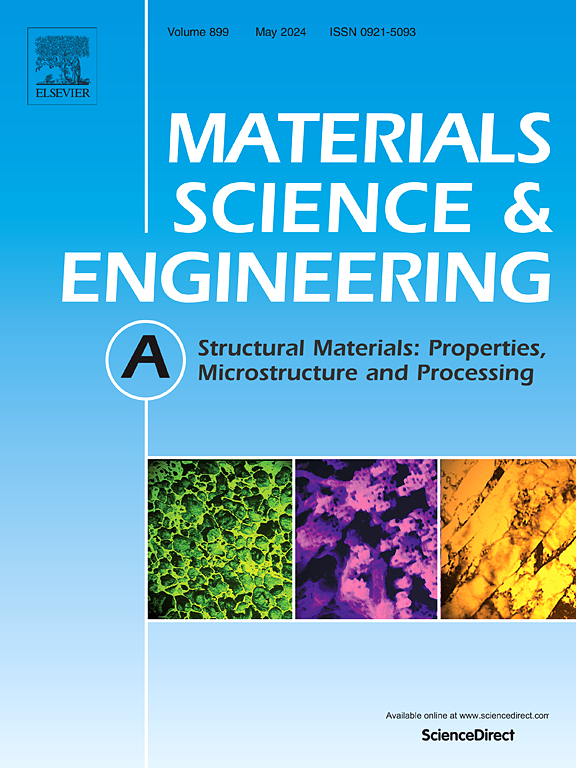增材制造AF9628钢力学性能的提高:晶胞偏析在相变中的作用
IF 6.1
2区 材料科学
Q1 MATERIALS SCIENCE, MULTIDISCIPLINARY
引用次数: 0
摘要
采用激光熔敷法制备了AF9628高强度低合金钢。初始非平衡微观结构表现为Cr、Mo等元素的胞状偏析,胞状结构尺寸为20 ~ 30 μm。样品被加热到950°C并在那里保持10分钟,然后以四种不同的冷却速率(即0.5,1,10和50°C/s)冷却,以研究冷却条件对微观结构的影响。结果表明,在特定的冷却条件下(1°C/s),细胞偏析可以有效地限制贝氏体/马氏体亚结构的生长。这成为一个有效的组件界面,可以阻碍相变,除了晶界。当冷却速度过快或过慢时,马氏体和贝氏体在整个晶胞组织中生长,晶胞偏析对相变的限制有限。在冷却速度为1℃/s时,其力学性能(抗拉强度为1865 MPa,伸长率为10.3%)优于其他热处理方式制备的样品。晶粒重构结果证实了细胞偏析对贝氏体/马氏体相变的限制作用。这种显微组织控制方法为低合金钢增材制造的显微组织和性能优化开辟了新的途径。本文章由计算机程序翻译,如有差异,请以英文原文为准。
Enhanced mechanical performance in additively manufactured AF9628 steel: Role of cellular segregation in phase transformation
In this study, AF9628 high-strength low-alloy steel was fabricated using laser melting deposition. The initial non-equilibrium microstructure exhibited cellular segregation of elements such as Cr and Mo, with cellular structure dimensions of 20–30 μm. Samples were heated to 950 °C and held there for 10 min before being cooled at four different cooling rates-that is, 0.5, 1, 10, and 50 °C/s-to research the impact of cooling conditions on the microstructure. The results demonstrated that under specific cooling conditions (1 °C/s), cellular segregation could effectively limit the growth of bainitic/martensitic substructures. This becomes an effective component interface that can hinder the phase transformation, in addition to the grain boundaries. When the cooling rate was too fast or too slow, martensite and bainite grew throughout the cellular structure, the phase-transformation restriction by cellular segregation was limited. At a cooling rate of 1 °C/s, its mechanical properties (tensile strength of 1865 MPa and elongation of 10.3 %), exceeding those of samples prepared by other heat treatment routes. The results of grain reconstruction confirmed the restrictive influence of cellular segregation on bainitic/martensitic transformation. This approach to microstructure control opens up new routes for the optimization of the microstructure and properties in additive manufacturing of low alloy steel.
求助全文
通过发布文献求助,成功后即可免费获取论文全文。
去求助
来源期刊

Materials Science and Engineering: A
工程技术-材料科学:综合
CiteScore
11.50
自引率
15.60%
发文量
1811
审稿时长
31 days
期刊介绍:
Materials Science and Engineering A provides an international medium for the publication of theoretical and experimental studies related to the load-bearing capacity of materials as influenced by their basic properties, processing history, microstructure and operating environment. Appropriate submissions to Materials Science and Engineering A should include scientific and/or engineering factors which affect the microstructure - strength relationships of materials and report the changes to mechanical behavior.
 求助内容:
求助内容: 应助结果提醒方式:
应助结果提醒方式:


